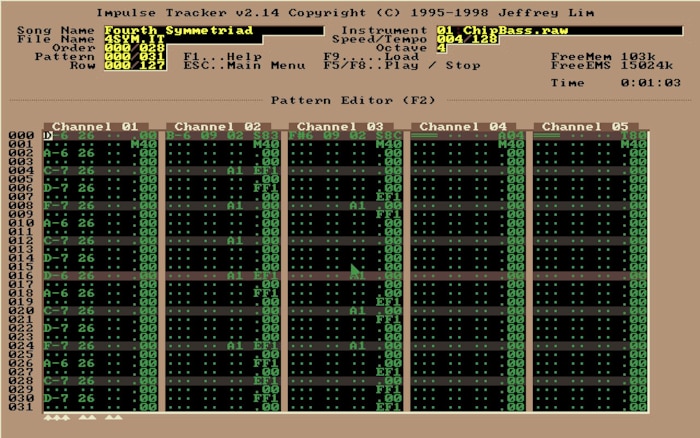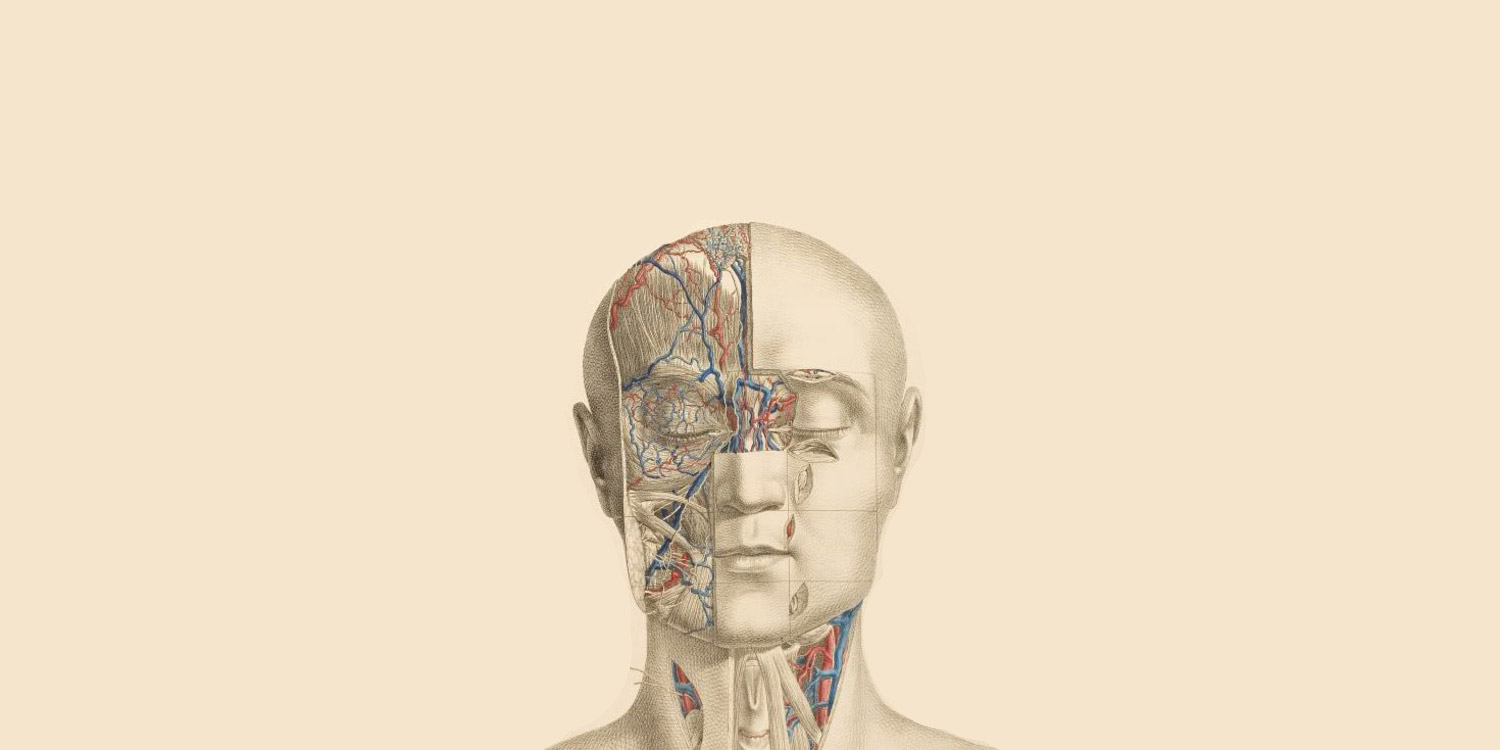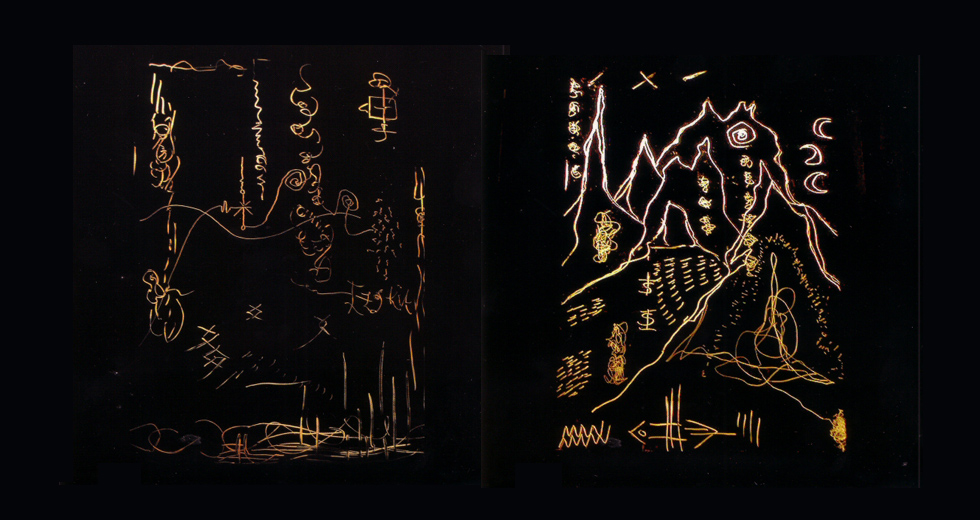Synth-Aesthesia: Trackers
In this month’s edition of Synth-Aesthesia – our regular series devoted to the world of gear – Vivian Host cracks the code of the underappreciated tracker family of music composition software, whose late 80s origin has evolved into a cult following for users today.
Watching music tracker software in action is akin to the opening scene from The Matrix. Upon a black background, neon numbers and letters cascade furiously from top to bottom and back again in a mysterious, hypnotic roll program. To the uninitiated, it’s a mystery how this cryptic tableau of codes and patterns comes together to produce tracks, but the wizards producing on programs like Impulse Tracker, ModPlug and Renoise understand better than anyone else how to manipulate math for music’s sake.

In the drag-and-drop era, trackers look especially trippy. They operate far more on key commands than mouse moves, with everything from notes to effects denoted by a hexidecimal value rather than a button or a graphic. If you want to play a C note in the fifth octave, you don’t hit a MIDI keyboard; instead you enter “C#5” where you want the note to play in the pattern. Want to delay a sample? There’s no knob or fader here. You enter a numerical value that specifies how far you want to tweak: 7 might be a little, 30 might be a lot. Commands like sliding the pitch up or cutting don’t live in a menu bar; they’re represented by entering the letters U and C, respectively. As data scrolls up and down the screen, it passes over the numbers you’ve entered, making finely-chopped breaks or haunting 8-bit melodies out of your cursor placements.
Tracker software goes back to the early days of computers — the first tracker, Ultimate Soundtracker, was released in 1987 for the Commodore Amiga. It was designed by Karsten Obarski, a German engineer who became a cult hero for the astoundingly evocative soundtracks he composed to Amiga games like Rally Master, Amegas and Crystal Hammer.
Obarski disappeared, but not before leaking the source code for Ultimate Soundtracker to the hackers. Soon, message boards and forums began to buzz with derivative programs like NoiseTracker, ProTracker and OctaMED. (A family tree of trackers can be found here). OctaMED (now called MED SoundStudio) was famously used to produce rave hits like Urban Shakedown’s “Some Justice” and DJ Zinc’s “Super Sharp Shooter”, as well as entire albums by Legowelt and Calvin Harris. In part because of the software’s precise drum programming abilities, trackers still have a toehold in the worlds of of IDM, breakcore and jungle, with Venetian Snares, Otto von Schirach and Cristian Vogel among the modern-day die-hard users.
Venetian Snares “Vache”
“Trackers reached the height of their popularity in the early 90s when the Amiga and the Atari ST were the main computers of choice for electronic music producers,” explains Erik Jalevik, a software developer for Renoise, one of the most powerful and developed tracker programs. “As computer performance increased, and PC and Mac became the dominant platforms, graphically-oriented sequencers featuring piano roll interfaces more or less took over. However, the tracker survived and carved out a niche of its own.”
While Ableton and Logic have become the popular kids in music production class, trackers remain the punks in the back of the room flipping off the teacher. While most music software is obsessed with becoming ever more intuitive, powerful and better looking, trackers still act very similarly to the way they did in the 80s. They read information up and down rather than side-to-side horizontally, ditching the “piano roll” view that became the standard for most sequencers, and the way you work within them – entering hexidecimal values on a grid rather than dragging and dropping – hews closer to computer programming than recording. And because hackers and trackers have worked together symbiotically from the beginning, the software encourages tweaking and open-source code; most trackers are made and modded by small crack teams and given away free via message boards and torrents.
“I never felt quite at home with Cubase’s or Acid’s very mouse-intensive way of working. All that clicking and dragging seemed to get in the way of the music.”
This was definitely part of the appeal to Travis Stewart, who has made the majority of his Machinedrum releases on Impulse Tracker. “I’ve been making electronic music since I was 13,” recalls Stewart, who now lives in Berlin. “At the time, I was living in my home state of North Carolina in a little city called Hickory. I didn’t know anyone who listened to, let alone made, electronic music. I was using IRC [Internet Relay Chat] at the time to meet people around the world who shared similar interests, and through this I discovered the Demo scene. It was a beautiful fusion of digital art and music, and the best part is that it was all free!” After checking out the various trackers that were popular (there were many), Stewart found himself attracted to Impulse Tracker. “There was something about the ease of use and the sampler/instrument view that intrigued me. I quickly learned how to make tunes with it just by studying tracks made by ‘veterans’. This was another very attractive aspect of the community, being able to learn how to use the software by sharing the track files with each other.”
Machinedrum “Laugh And Cry” (from 2009’s Want To 1 2 album)
“I grew up with Commodore computers, and if you were interested in exploring making music, tracker software was the natural choice, or even the only choice,” recalls Jalevik. “Me and my brother got a second-hand Amiga around 1991 and it came with all these floppy disks containing modules (i.e. tracks) and samples, and a program called ProTracker for playing and editing them. You had four channels available in which to trigger samples, and no effects except a few sample manipulation commands, but it was a fun and immediate way to get started making tunes. As I moved on from the Amiga, I started using more open-ended, state-of-the-art programs such as Cubase or Acid, but I never felt quite at home with their very mouse-intensive way of working. All that clicking and dragging seemed to get in the way of the music.”
Chris Jarvis “Blue Flame”
“In most trackers, especially older ones, you have to think about the spatial relations of these numbers in your head as related to the sound and sample,” explains Todd Osborn, the Michigan-based producer who makes techno, ragga jungle and ghettotech under aliases including Osborne, Soundmurderer and Starski & Clutch. Much of Osborn’s music has been made with All Sound Tracker, which he was introduced to by his friend Rodger Devine, now a senior OS programmer at the University of Michigan. “There never was a romance for me with trackers,” Osborn states matter-of-factly. “I used a tracker because it was capable of making music the way I wanted it to sound – namely, intricate breaks.
“AST is very limited but I’ve found that it’s often a great thing,” he explains. “To get around these limitations, you learn how to create your own effects (like delays), generate your own sounds and create something with a relative minimal amount of sample memory. But this definitely isn’t proprietary to trackers. Many classic tracks of multiple genres were created on machines with huge limitations compared to what we have today.”
“When you are limited to a very archaic and basic platform for writing music, it forces you to come up with ideas you might not have thought of with the seemingly limitless options presented by most other software.”
Machinedrum concurs that part of the beauty of older trackers lies in their limitations. “With no VSTs [Virtual Studio Technologies] and very dodgy MIDI, you are pretty much limited to what samples you have. I believe this boosts creativity in a way that is harder to achieve with modern Digital Audio Workstations. When you are limited to a very archaic and basic platform for writing music, it forces you to come up with ideas you might not have thought of with the seemingly limitless options presented by most other software. This process and method, which I have practiced for years, has stuck with me to this day and influences the way I approach making music, even now that I’m using Ableton Live.”
Like any software, different trackers also have various levels of digital grit and grime that make them special. “I love the raw sound you can get out of Impulse Tracker,” Machinedrum continues. “It reminds me of the sound you get out of hardware samplers like the MPC and the SP-1200. You could push the output gain of trackers without getting that nasty digital clipping you get with most DAWs. There was some special compression going on that really gave Impulse Tracker a ‘sound’. And I liked the fact that you had to spend a lot of time sampling things, which I thought was quite a hip hop kind of thing.”
DefleMask Tracker (which works on Game Boy and Sega Genesis)
Though some trackers (like Renoise, Buzz and Psycle) have added on modern features like unlimited channels, VST support and automation, keeping things stripped down is part of their core DNA. Due to their relative simplicity, trackers run on many types of computers – from emulator plug-ins that sync with Mac software to special scripts for sequencing on Sega Genesis and Nintendo DS consoles. This also makes trackers a good choice for producers who can’t afford expensive software or the latest computer. “Trackers have their roots in game music, and were therefore written with efficiency in mind,” says Jalevik. “On these older platforms, resources were limited, and it was important that the music did not use up too much processing power or memory. The original module formats and playback engines were designed in such a way that music could be efficiently played back within a game, for example, something that software geared towards commercial music production probably was not.”
With the current hypermodern twist reviving 1990s cyber culture, it’s not a stretch to say that trackers could soon be back in fashion… if not from people using them, then at least from an aesthetic angle. In the landscape of a thousand plug-in options and perfectly groomed electronic music mega-hits, more back-to-basics tools seem more intriguing than ever. A quick scan of YouTube reveals plenty of homespun tutorials on how to use trackers, but the videos of legendary Demo scene competition entries (like the one below from Future Crew) and vintage breakcore videos are more compelling still. The ubiquity of trackers may have waned, but their mystique sure hasn’t.
Future Crew “Second Reality” (1993)

